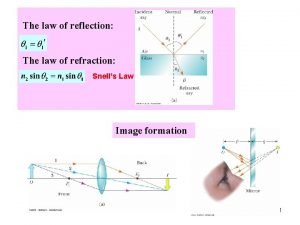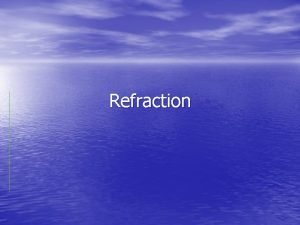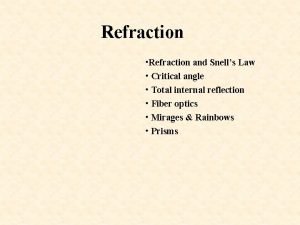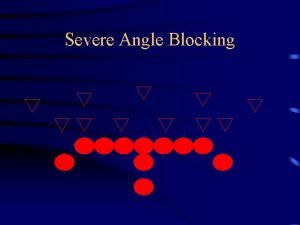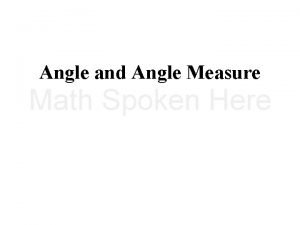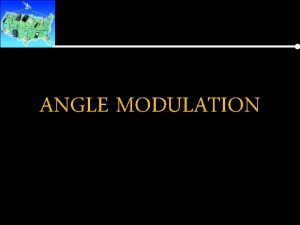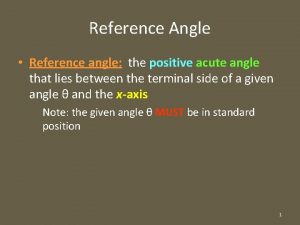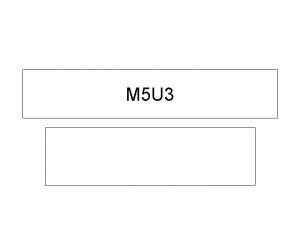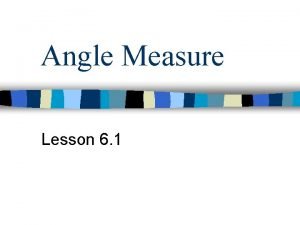Lesson 4 Starter Question Critical Angle Learning Intention












- Slides: 12

Lesson 4 - Starter Question

Critical Angle

Learning Intention: To learn why there is a critical angle for a block of glass and to learn the concept of total internal reflection. Optical fibres are a crucial part of telecommunications and we will find out how they work, and their advantages. Success Criteria: Use knowledge of the critical angle to analyse how telecommunication signals can be sent using optical fibres.

Experiment: Normal line Glass block Sheet of Paper Ray box with single slit i) Set up the apparatus as shown above. ii) In the space in your workbook, sketch what happens when the angle of incidence is 30 o.

iii) Now, sketch what happens when the angle of incidence is 60 o. iv) Move the laser light until the light refracts along the edge of the block. v) Measure the new angle of incidence (this is the critical angle).

CRITICAL ANGLE When the angle of incidence in glass is AT the critical angle, the angle of refraction in air is 90 o. θC If light comes in LESS THAN the critical angle (the dashed line represent the critical angle): θC If light comes in MORE THAN the critical angle (TOTAL INTERNAL REFLECTION): θC

Applications of T. I. R. Total Internal Reflection is used in optical fibres. An optical fibre is a long, thin piece of glass along which light signals can travel.

OPTICAL FIBRES Optical fibres use total internal reflection to send light signals encoded with information. They can be used in various telecommunications networks (e. g. broadband, telephone etc. ). Optical Fibre Although optical fibres can be difficult to replace if broken, glass is much cheaper than copper and several signals can be sent along one fibre at a time.

2003

2008

Success Criteria: Use knowledge of the critical angle to analyse how telecommunication signals can be sent using optical fibres. Tick off the box in your workbook when you have met the success criteria.

Now, use the space in your workbook to produce a summary of critical angle. You may wish to produce concise bullet points, or draw a mind-map, or use any other useful revision technique.
 Critical semi critical and non critical instruments
Critical semi critical and non critical instruments Semi critical
Semi critical Costa level 3 questions examples
Costa level 3 questions examples Learning intention verbs
Learning intention verbs Example learning intentions
Example learning intentions Examples of learning intentions
Examples of learning intentions Summarising learning intention
Summarising learning intention Lesson starter
Lesson starter Cuadro comparativo de e-learning
Cuadro comparativo de e-learning Compare non-critical readers with critical readers.
Compare non-critical readers with critical readers. Snell's law example
Snell's law example Critical angle formula
Critical angle formula Snell's law
Snell's law










